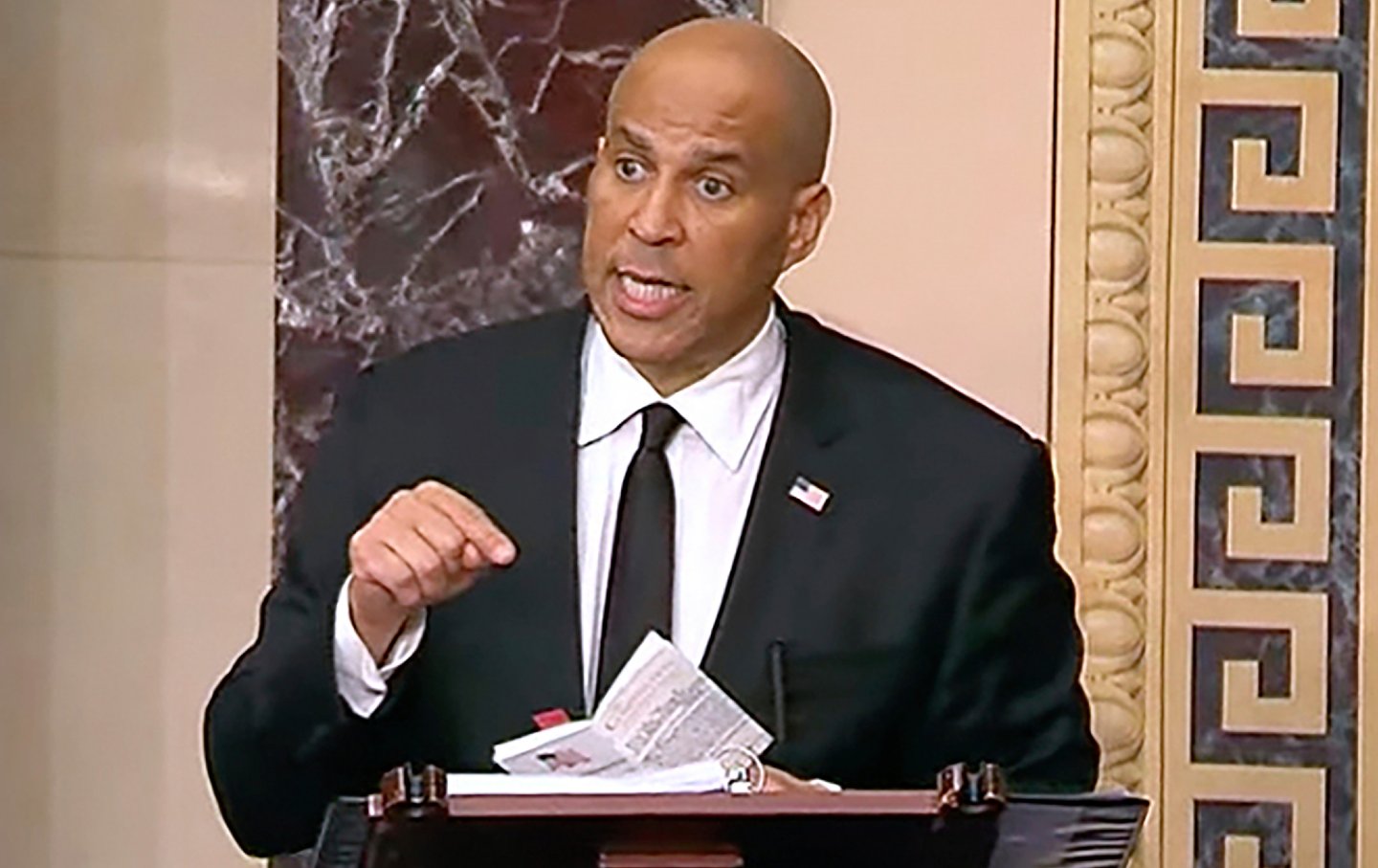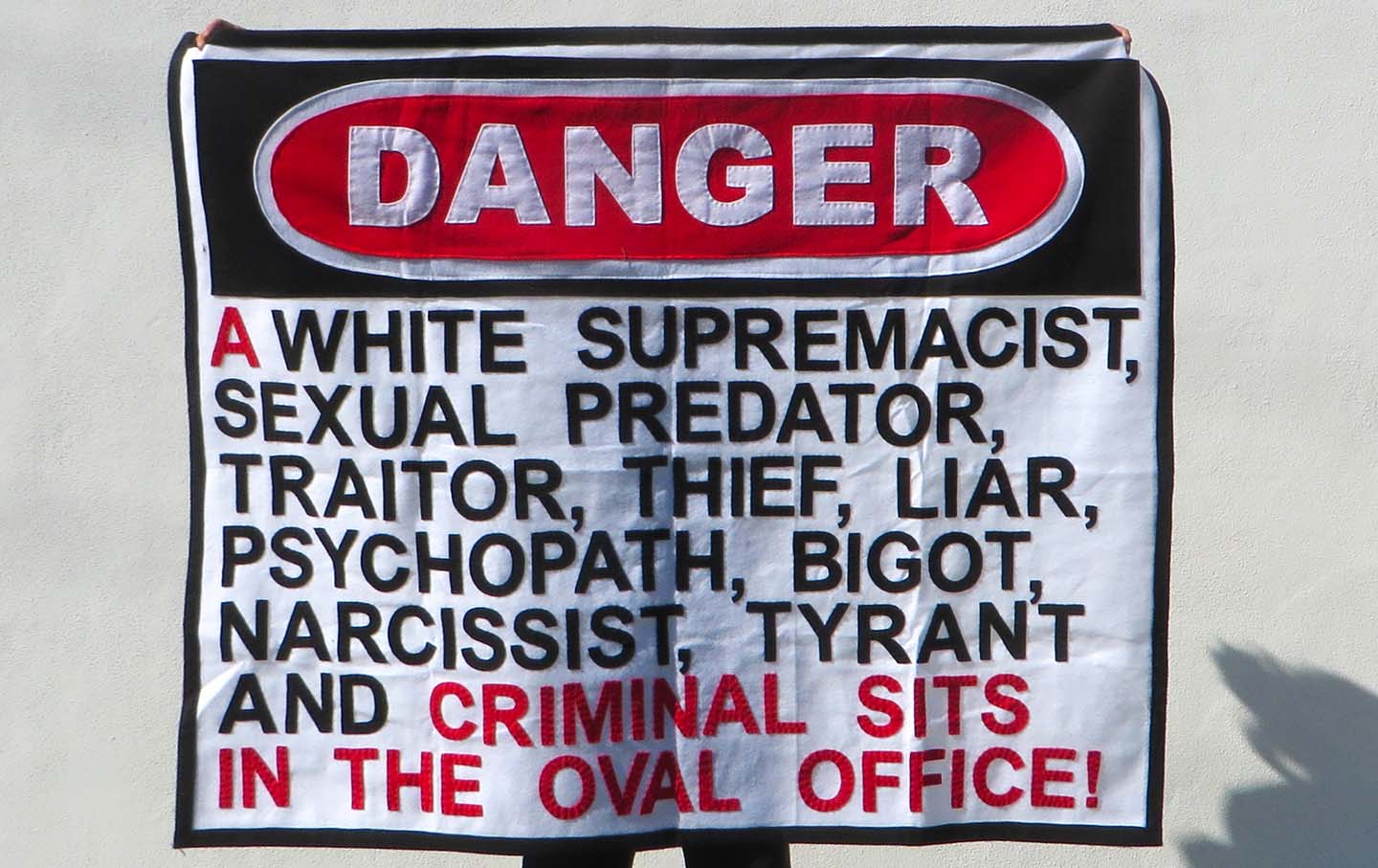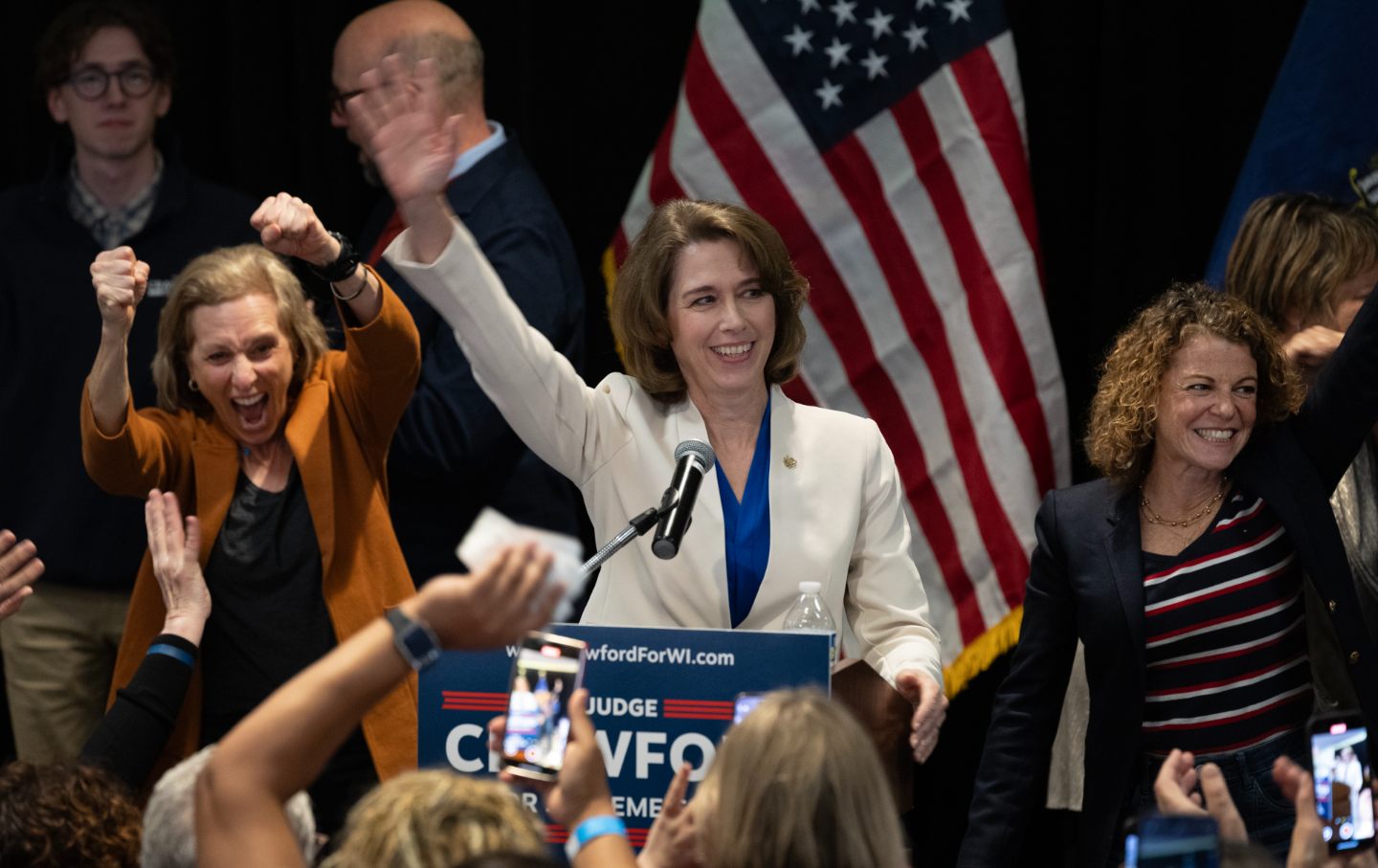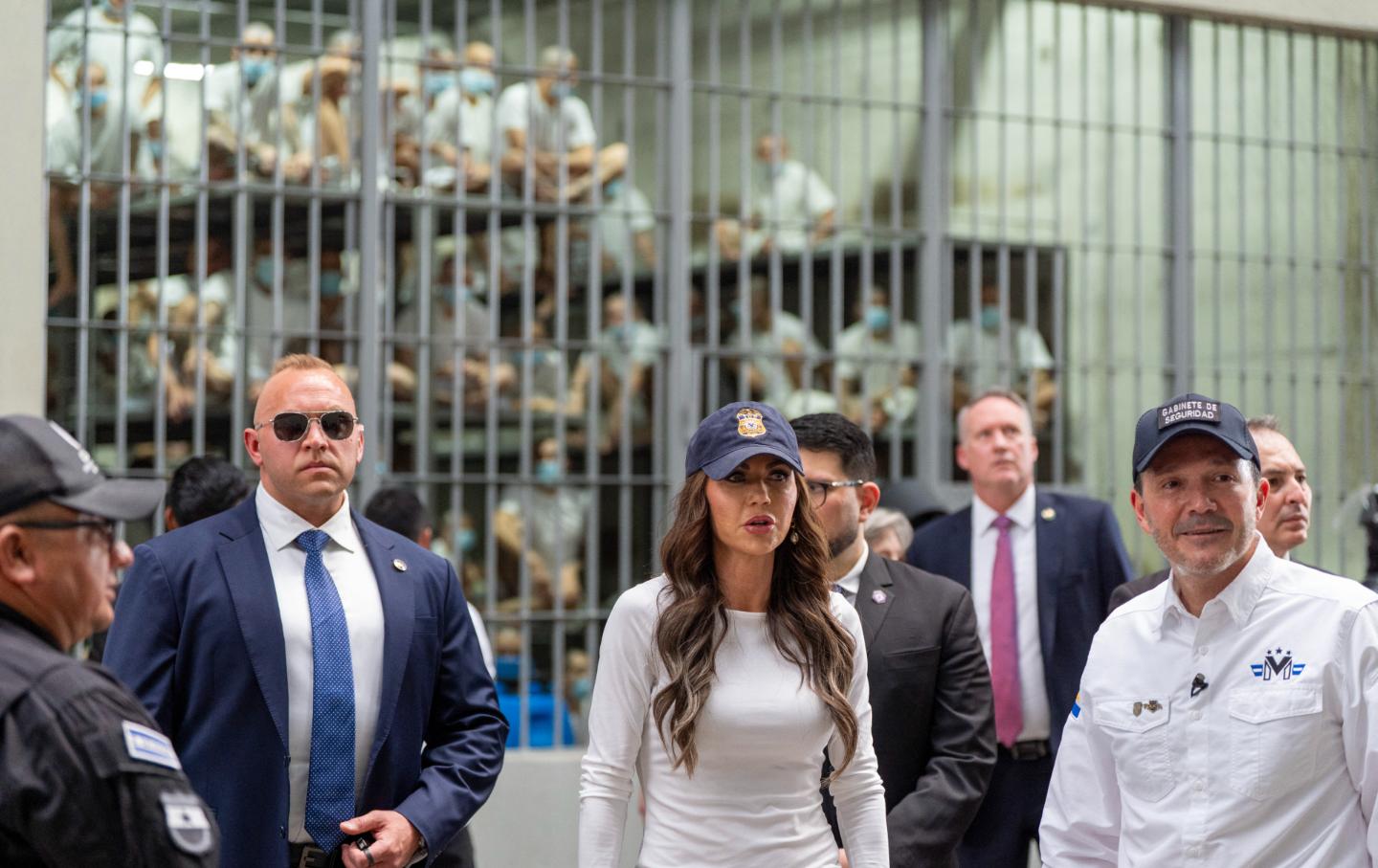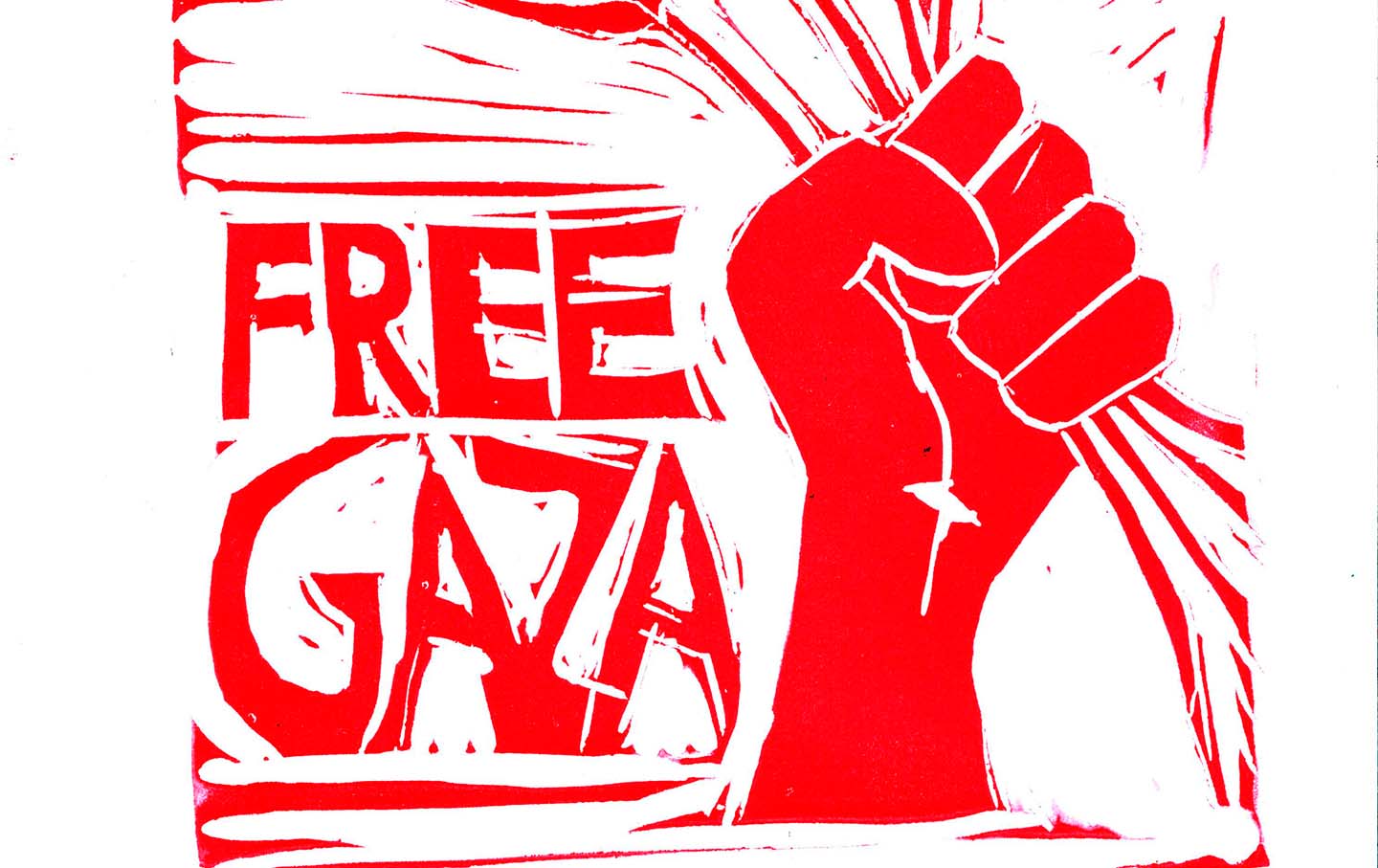The Democrats Disregarded Poor and Low-Income Voters—to Their Peril
Poverty is clearly anything but a marginal experience—and yet, as in the last election, it’s repeatedly minimalized and dismissed in our nation’s politics.
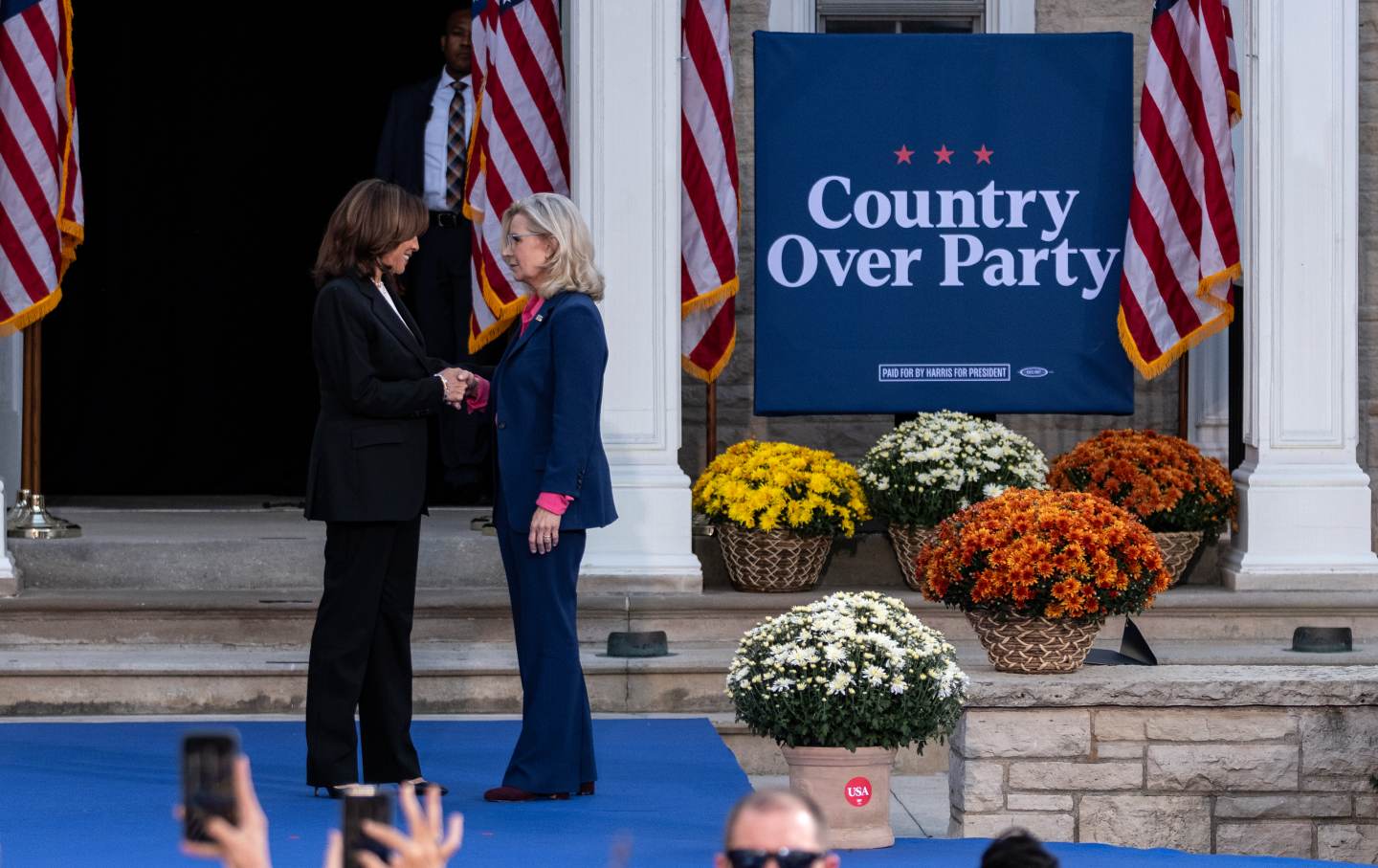
Liz Cheney, former US representative and daughter of Dick Cheney, greets Democratic presidential nominee Kamala Harris during a rally at Ripon College on October 3, 2024, in Ripon, Wisconsin.
(Jim Vondruska / Getty Images)
This article originally appeared at TomDispatch.com. To stay on top of important articles like these, sign up to receive the latest updates from TomDispatch.com.
Before November 5, millions of us were already struggling with poverty, extreme storms, immigration nightmares, anti-trans bills, criminalized reproductive health, the demolition of homeless encampments, the silencing of freedom of speech on campuses… and, of course, the list only goes on and on. Since Donald Trump and JD Vance were elected, more of us find ourselves in a state of fear and trembling, given the reports of transgender people attacked in broad daylight, misogynist social media posts threatening “your body, my choice,” Black college students receiving notes about returning to enslavement, and the unhoused beaten and battered.
In the wake of the election results, there has also been a flurry of activity in anticipation of the extremist policies Donald Trump and crew are likely to put in place to more deeply harm the nation’s most vulnerable: mass Zoom meetings with MoveOn, the Working Families Party, Indivisible, and more; interfaith prayer services for healing and justice organized by various denominations and ecumenical groups; local actions pulled together by the Women’s March; community meetings with the hashtag #weareworthfightingfor; and calls to mobilize for inauguration day and beyond.
Although some were surprised by the election outcome, there were others who saw it coming and offered comfort and solidarity to their communities even before the results were in. On the eve of election night, a public elementary school in West Harlem, New York, sent this message to its families:
“We know emotions are running high. Today, and last week at school, many conversations in PreK through 5th grade were had and heard regarding how voting happens…worry from some students about whether they will be safe after tomorrow.… We assured all children that our school, no matter what, will always be a safe place for them and their families.… It is so hard feeling that this election and its outcomes could have such a huge impact on any person based on their status, race, gender identity, sexuality, religion, country of origin and so many other identities which make our school so beautifully diverse…It is not easy being a parent/caregiver on a good day, let alone when it feels like times are so turbulent and uncertain and even, scary. We are here for you, parents, caregivers, and we are in this together. No matter what!”
That message came from a Title 1 school, nearly 60 percent of whose students qualify for free school meals. If Trump keeps up with his promise to close the Department of Education, tens of thousands of public schools across the country, like the one in West Harlem, could lose critical funding and programs that sustain tens of millions of students and their families—that is, if public education isn’t completely privatized in some grim fashion.
Of course, not all communities approached Trump’s election with such trepidation. On November 6, the Bloomberg Billionaire Index reported that the 10 richest men in the world added $64 billion to their own wealth after Donald Trump was declared the winner of the 2024 election. Since then, the stock market has had some of its best days in recent history.
An Impoverished Democracy
After inciting an insurrection at the Capitol, being indicted in state and federal court, convicted of 34 felony counts, and using racist, sexist, and hateful rhetoric prolifically, Donald Trump has gone down in history as the only convicted felon to become an American president, receiving more than 74 million votes and securing 312 Electoral College votes. Although an undisputed victory, the outcome relied heavily on a weakened democracy and a polarized economy, drawing on discontent and disarray to regain political power.
Indeed, although Donald Trump has the distinct “honor” of being the first Republican to win the popular vote in 20 years, he has done so after more than a decade of assaults on voting rights, unleashed in 2013 when the Supreme Court gutted the Voting Rights Act. Over the next 10 years, nearly 100 laws were passed in 29 states that restrict voting access, from omnibus bills to polling location closures, limits on mail-in and absentee voting, harsh ID requirements (including eliminating student ID cards as a valid form of identification), and more. Since 2020, at least 30 states have enacted 78 restrictive laws, 63 of which were in effect in dozens of states during this election. And in 2024 alone, nine states enacted 18 restrictive voting laws, alongside purges of thousands of voters in the days leading up to November 5.
In addition to such prolonged attacks on the right to vote, widespread poverty and economic precarity have become defining characteristics of our impoverished democracy: More than two of every five of us are poor or low-income, and three in five are living paycheck-to-paycheck without affordable healthcare, decent homes, or quality education.
According to the US Census Bureau’s 2024 report Poverty in the United States: 2023, 41 percent of this country’s population has a household income either under the poverty threshold or just above it, precariously living one emergency away from financial ruin. That translates into approximately 137 million people who are struggling every day to make it through without falling even further behind. Those tens of millions of people include a disproportionate percentage of people of color, including 56.5 percent of Black people (23.4 million), 61.4 percent of Latino people (40.2 million), 55.8 percent of Indigenous people (1.4 million), and 38 percent of Asian people (8.5 million). They also include nearly one-third of white people, 60 million, and nearly half (49 percent) of all children in the United States. Such rates are slightly higher for women (42.6 percent) than for men (39.8 percent), including 44.6 percent for elderly women.
When tallied up, these numbers mirror pre-pandemic conditions in 2018 and 2019, during which poverty and low-income rates stood at about 40 percent, impacting 140 million people in every county, state, and region of the country.
In other words, in this sick reality of ours, poverty is clearly anything but a marginal experience—and yet, as in the last election, it’s repeatedly minimalized and dismissed in our nation’s politics. In the process, the daily lives of nearly one-third of the electorate are discounted, because among that vast impoverished population, there are approximately 80 million eligible voters described by political strategists as among the most significant blocs of voters to win over.
Case in point: In 2020 and 2021, there was a significant dip in the overall number of people who were poor or low-income. Covid pandemic programs that offered financial help also expanded access to health care, food stamps, free school meals, and unemployment insurance, while monthly support from the Child Tax Credit lifted over 20 million people out of poverty and insecurity while increasing protection from evictions and foreclosures. Such programs made millions of people more economically secure than they had been in years.
Nonetheless, instead of extending and improving them and potentially gaining the trust of millions of poor and low-income voters, all of these anti-poverty policies were ended by early 2023. By 2024, not only had the gains against poverty been swiftly erased, but more than 25 million people had been kicked off Medicaid, including millions in battleground states like Georgia, Michigan, Ohio, Pennsylvania, and Wisconsin. In that same time period, the Biden administration approved an $895 billion budget for war and another $95 billion in additional aid to Ukraine and Israel.
Rather than speaking to such economic crises or pledging to address such pervasive insecurity, over the course of the election season, the Democrats emphasized a rising GDP, a strong job market, and important infrastructure investments made in recent years—macro-economic issues that had little effect on the material well-being of the majority of Americans, especially those struggling with the rising cost of living. For instance, pre-election polling among Latino voters showed that three-quarters (78 percent) of them had experienced an increase in food and basic living expenses; two-thirds (68 percent) emphasized the high costs of rent and housing; and nearly three in five (57 percent) said that their wages weren’t high enough to meet their cost of living and/or they had to take second jobs to make ends meet.
When you consider the grim final results of election 2024, such realities—and the decision of the Democrats to functionally disregard poor and low-income voters—should be taken into account.
When the Wood Is Green/When the Wood Is Dry
With just over 74 million votes (to Harris’s 71 million), among a voting-eligible population of more than 230 million, Trump actually received only one-third of the possible votes in this election. Nearly 85 million eligible voters simply chose not to turn out. In reality, he won’t enter office with a popular mandate.
However, buoyed by a Republican-controlled Senate and House of Representatives, his second term brings with it a profound sense of dread, based on a heightened awareness of the policies that Trump 2.0 is likely to carry forward (laid bare in the Heritage Foundation’s nearly 900-page pre-election Project 2025 mandate). From mass deportations to assaults on social-welfare programs, housing programs, reproductive rights, LGBTQ+ families, and public education, millions of people could be thrown into crisis, with alarmingly fewer ways to resist or express dissent, especially given Trump’s longtime willingness to use military force to quell protest. With the passage of the “nonprofit killer bill” in the House of Representatives (before Trump even takes office), the infrastructure of resistance is also under threat. Add to all this: Trump has already started talking about overhauling the Medicaid and food-stamp programs that benefit at least 70 million poor and low-income people to offset the costs of extending tax cuts to billionaires and corporations.
All of this brings us to the Bible.
Popular
“swipe left below to view more authors”Swipe →Poverty was both severe and all too common in Jesus’ day. Ninety percent of the population in the Roman empire was believed to have been poor, with a class of expendable low-wage workers (to which some historians suggest Jesus belonged) so poor that many only lived remarkably brief lives in utter precarity. Shifts in farming and fishing had catapulted some people into great new wealth but left the vast majority struggling for basics like food and housing. Many of the impoverished subjects of the Roman Empire joined political and religious renewal movements, which took various forms and used various tactics to resist these and other injustices.
Some readers may be familiar with the decadence and violence of the Roman Emperor Nero. Popularly known as the Antichrist, he came to power after Jesus walked the earth, but as is clear from his nickname, had a grave impact on many of Jesus’s followers. Nero was, of course, the one who was accused of “fiddling while Rome is burning”—holding lavish banquets, using and abusing (even possibly raping) some of his poor subjects, persecuting Christians, and bringing about the decline and eventual fall of the Roman empire through his authoritarian rule and decadent overspending.
As detailed in Luke’s Gospel, during the last week of his life, Jesus turned to the people of Jerusalem and wept. He described the profound suffering they had been enduring and instructed them to brace themselves for the suffering still to come, saying, “For if they do these things when the wood is green, what will happen when it is dry?” This line foreshadows Jesus’s death on the cross (an execution reserved for those who dared to challenge the Roman Empire and its emperors), the destruction of the Jerusalem Temple, and the persecution of his poor followers who continued to practice mutual solidarity, even after that crucifixion.
Writing decades later, the author of Luke’s gospel may have been offering a warning about emperors like Nero that would foreshadow later times. Luke had the benefit of hindsight in the wake of Jesus’s life and death in which there was not exactly a lot of good news about the canceling of debts, the release of those enslaved to unjust structures, or the prosperity of the poor (of the sort Jesus had called for when he started his public ministry). Rather, those who dared to stand up to Rome were being persecuted, while so many others were being overworked and underpaid in a society that was faltering.
Two thousand years later, this sounds all too familiar, doesn’t it?
Looking at Donald Trump’s new appointments and his (and his cronies’) plans for “making America great again,” you really have to wonder:If the poor and our democracy were suffering before Trump was reelected, what will happen now? If, amid relative abundance, the poor were already being abandoned, what will indeed occur when those with the power to distribute that abundance, and protect our air, water, and land, openly disdain the “least of these,” who are most of us, and instead favor the wealthy and powerful?
Donald Trump may liken himself to Jesus in his media appearances and election rallies, but his words and actions actually resemble those of Nero and other Roman emperors. With claims that “I alone can fix your problems” and bread-and-circus rallies like the pre-election one he held at Madison Square Garden, perhaps a more accurate parallel with the incoming administration may, in fact, be Nero and his cronies who stood against Jesus and his mission to end poverty.
If so, then for those committed to the biblical call for a safe and abundant life for all, such times demand that we focus on building the strength and power of the people. During the fall of the Roman Empire, poor and dispossessed communities banded together to build a movement where everyone would be accepted and all needs would be met. Don’t you hear echoes of that in the words and actions of that school in West Harlem, so deeply concerned about its families, and the community actions proclaiming that “we are worth fighting for”?
Such communities of yesteryear knew a truth that is all the more important today: Lives and livelihoods will be saved, if at all, from below, rather than on high. As we approach a new year and the inauguration of Donald Trump (on Martin Luther King Day, no less), let us take to heart a favorite slogan of the authors: “When we lift from the bottom, everybody rises.” This is the only way forward.

